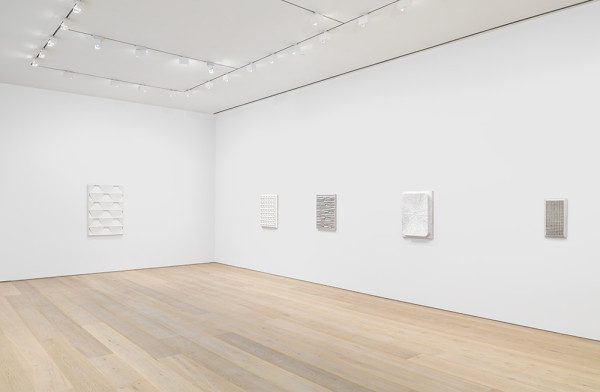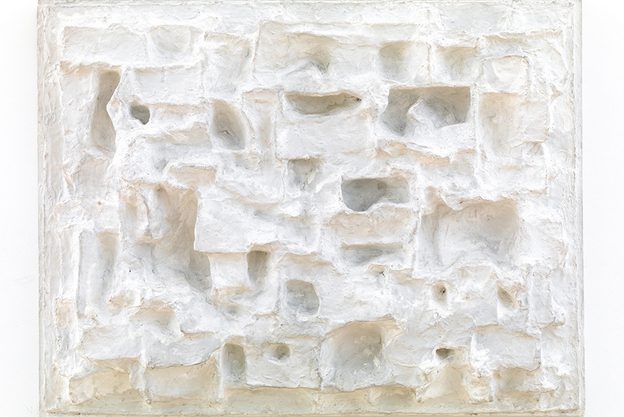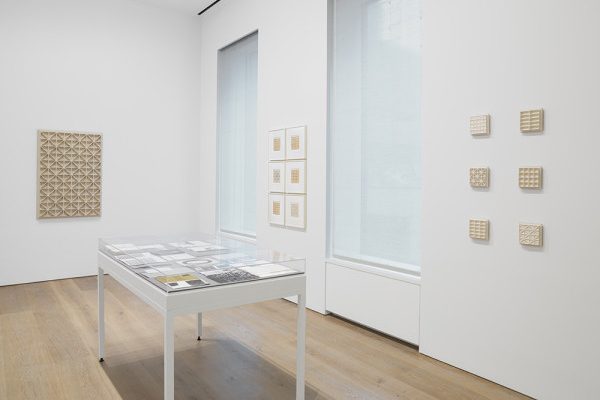ART CITIES:N.York-Jan Schoonhoven
Regarded as one of the most important Dutch artists of the late twentieth century, Schoonhoven is recognized for his innovative and systematic investigations into light, form, and volume. Despite spending the majority of his life in Delft, the Netherlands, where he worked from 1946 to 1979 as a civil servant for the Dutch Postal Service, Schoonhoven rose to artistic prominence as an active and influential member of the international avant garde.
By Dimitris Lempesis
Photo: David Zwirner Gallery Archive
Beginning in the ‘50s, he played a central role in the Nederlandse Informele Groep (Netherlandish Informal Group) and the Nul-groep (Nul Group)-which were affiliated with the European Informel movement and the ZERO Group respectively. Rejecting illusionism and subjective expression, these artists shared a collective interest in exploring the essential, objective forms and properties of art. Schoonhoven in particular developed a highly unique body of work that centered on a sustained investigation of serial abstraction, the monochrome, and the grid. In their carefully structured yet sensitively rendered forms, the artist’s works have been fittingly described as “cool, strictly ordered and well considered… but also familiar, humane, and intimate”, as said Johannes Cladders. Providing a comprehensive overview of the development of Schoonhoven’s sculptural wall reliefs, the exhibition trace their evolution from the earliest iterations to the most iconic and mature examples. While Schoonhoven began his artistic career making colorful drawings inspired primarily by the work of Paul Klee, he established his own singular artistic vocabulary in the late 1950s, when he began to develop his technique for making reliefs. Gradually expanding his compositions into three dimensions, Schoonhoven utilized cardboard and papier-mâché to lend depth, volume, and dynamic variations in light and shadow to his abstractions. The exhibition includes Motel, 1956, a prime example of the artist’s initial transition from two- to three-dimensionality. Within a few years, the artist’s forms became increasingly experimental and chance-based, as in his constructions détruites, or “destroyed structures”-cardboard reliefs that he demolished and subsequently remodeled with papier-mâché, two examples of which both from 1960, are included. Pivotal to the artist’s oeuvre was his shift in 1960 to the employment of white monochrome surfaces and geometric, grid-based compositions. The artist would go on to expand his production to larger serial reliefs that reflect the apex of his production and his persistent fascination with the image-forming characteristics of light and shadow. Concurrent and related to the production of his reliefs, Schoonhoven created a large number of works on paper including drawings in pen and ink as well as prints, which, like his reliefs, are characterized by subtle marks or geometric units that are distributed evenly over the surface of a white page. These and other works on paper make clear Schoonhoven’s ongoing interest in the simple repetition of form and the nuanced play of light and dark. The gallery’s presentation expands upon the exhibition, “ZERO: Countdown to Tomorrow, 1950s–60s“, which provides a window into Schoonhoven’s position as a seminal figure of the twentieth-century European avant garde.
Info: David Zwirner Gallery, 537 West 20th Street, New York, Duration: 9/1-14/2/15, www.davidzwirner.com




